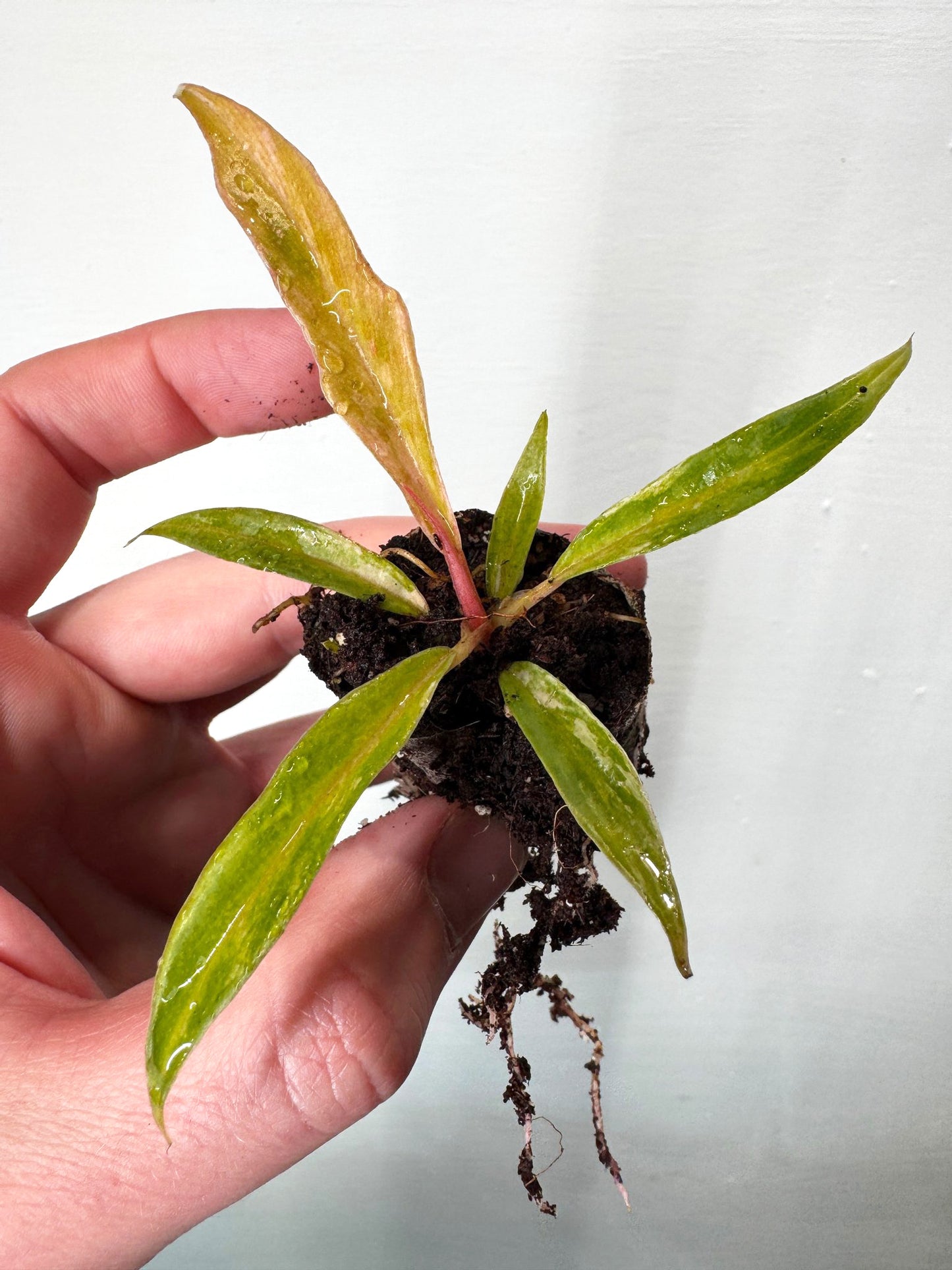- Home
- >
- Philodendrons
- >
- Philodendron tortum variegata
Plantthatplant
Philodendron tortum variegata
Philodendron tortum variegata
Verfügbarkeit für Abholungen konnte nicht geladen werden
About
About
Philodendron tortum variegata – History & Facts
Origin & Discovery
Philodendron tortum is a rare species of aroid native to the rainforests of Brazil. It was officially described in 1957 by botanist S.M. Mayo. The variegated form (variegata) is not found in nature but is a horticultural variation, typically the result of spontaneous mutation, selective breeding, or tissue culture propagation.
Unique Appearance
What sets Philodendron tortum apart is its skeletal, deeply lobed, narrow leaves that resemble a mix between fern fronds and palm leaves. The variegated version features cream, pale yellow, or mint-colored patterns, often in marbled or sectoral forms. These irregular patches are due to a lack of chlorophyll in certain parts of the leaf.
Fun Facts
Variegated tortum is highly collectible due to its rarity and unique look.
The plant grows more slowly than its all-green counterpart due to reduced chlorophyll.
It’s often sold through specialty nurseries or private collectors and can command high prices.
Variegated aroids like this one are often propagated via tissue culture or selective cutting to maintain the variegation.
While it's a climber, it stays fairly compact compared to other philodendrons, especially indoors.
Specification
Specification
Care guide
Care guide
Provide bright, indirect light
The plant thrives in bright but filtered light. Too much direct sun can burn the variegated parts, while too little light may cause variegation to fade and growth to slow.
Use a loose, airy substrate
A high-drainage mix designed for aroids works best. Combine chunky materials like bark, perlite, pumice, and coco chips to keep roots oxygenated and avoid waterlogging.
Keep humidity consistently high
Aim for humidity levels above 60%. In drier environments, use a humidifier or place the plant in a greenhouse cabinet or bathroom with good light.
Water moderately and consistently
Allow the top 2–4 cm of the substrate to dry out between waterings. Overwatering is the most common issue and can lead to root rot, especially with slower-growing variegated plants.
Feed lightly during the growing season
Use a balanced liquid fertilizer at half strength every 4–6 weeks from spring through early autumn. Avoid overfertilizing, which can stress the variegated leaves.
Share


